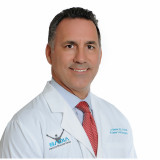
Much debate is currently focused on health care reform with an emphasis on controlling costs and increasing access, all while maintaining quality. It’s a daunting challenge — and it’s clear that the basic recommendations to meet the challenge are fundamentally flawed. Indeed, a very different approach may be necessary.
To start, the recent focus on increasing primary care may actually be more costly. Primary care doctors are a necessary part of our medical infrastructure, but they need to work more closely with their subspecialized colleagues. This will – paradoxically – decrease health care costs in the long run. The exponential explosion of medical knowledge has made it impossible for a physician to have even a cursory knowledge of all specialties, let alone subspecialties. The result is that a general physician can often miss the diagnosis, and therefore be unable to formulate the appropriate treatment plan.
For example, it is not uncommon that a patient presents to me, a hand specialist, with wrist pain. My experience and clinical acumen will often lead me to the diagnosis quickly, just by listening to the patient’s complaints. But if the patient is coming to me from a primary doctor, it’s not uncommon that he’s already had an MRI, a battery of blood tests, and perhaps even a course of physical therapy. The problem is that this patient may simply be suffering from DeQuervain’s tendonitis, a very common condition, which responds to a single corticosteroid injection in roughly 80% of cases. Often, I am so confident that a corticosteroid injection will resolve the issue that patients rarely need a follow-up appointment. In many cases, above and beyond my personal experience, the subspecialist makes the diagnosis faster, with superior resolution of the clinical problem, and at much less cost, utilizing less testing and imaging studies.
The issue is that the scenario above applies to nearly all fields of medicine. Even in other orthopaedic areas, I, as a hand surgeon, would be completely out of my league, despite my training in orthopaedics, if evaluating a patient presenting with something as common as intractable low back pain. Low back pain occurs in 65 million Americans and costs our society more than 100 billion a year! If I feel ill-prepared to manage the problem as an orthopaedist, how can a general internist be sufficiently qualified? And further, even if the general internist (or chiropractor, etc.) makes the correct diagnosis, how can we ensure they’re not missing spinal stenosis, a midline herniated disc, or perhaps a spinal cord tumor? Every diagnosis, whether glaucoma, lymphoma, or renal hypertension, should be managed by the appropriate specialist, from the outset, and until symptom resolution/management.
A further problem is the introduction of non-medical personnel into the fabric of American medicine. These individuals, often serving as “cost-controllers,” are frequently interfering with care. Do physicians really need a pencil-pusher “authorizing” care when calls are made to the insurance carrier to ask permission to perform a procedure or order a test?
This layer of bureaucracy is redundant and not cost-effective. It slows the process and adds cost to the system. Are MDs not the best barometer of whether a test is needed? Are physicians not subject to the most arduous training and education of most any profession? Do physicians not maintain a certain ethical standard, dictated by a professional oath of conduct and enforced by medical societies? The amount of money — and time — saved by avoiding this validation step would greatly offset an occasional physician over-utilizer, or even an unscrupulous provider.
The overly central role that the hospital systems continue to assume is another major cost issue (and likely the result of the powerful hospital lobby). We need to not only move feasible services into the realm of outpatient care but also make them increasingly specialized. A major hospital system in the Miami area has long recognized this fact and astutely formed a large network of efficient and accessible outpatient urgent care and diagnostic centers. Ophthalmology and endoscopy centers also did this long ago. A multidisciplinary team can most effectively, and prudently, address clinical problems.
In a 7-year study, KNG Health Consulting found that moving a variety of surgical procedures into ambulatory surgical centers (ASCs), away from hospital centers, greatly decreased the cost of treatment. Despite concerns to the contrary, there was no overutilization, or greater self-referral of patients, even when the ASC was physician-owned. Over-burdensome government regulations, such as Stark I and II laws, have unfortunately inhibited this growth and not allowed cost savings to be realized. Further expansion of government bureaucratic control would be even more detrimental.
The current hypothesis suggests that specialized centers contain not only ASCs, but also all of the necessary diagnostic, consultation, and rehabilitative services under one roof. They promote efficiency while delivering the most optimal care possible. Clinical studies are also optimally performed in this environment; large cohorts of patients with similar diagnoses can be studied, and patient outcomes can be more successful, as well as cost-efficient. Patients would have the opportunity to select these centers of their own accord, and be treated if appropriate, or referred by a system of less specialized physicians. This “one-stop shopping” concept is a common-sense approach to health care.
Referring back to my previous example, a middle-aged laborer complaining of low back pain would be seen, perhaps even without an appointment, in an orthopaedic urgent care center. An orthopaedic physician assistant (or perhaps, a family practice physician with training in musculoskeletal medicine) would do a cursory physical exam, order appropriate tests, and have the spinal orthopaedic surgeon see the patient in follow-up if initial analgesics, NSAIDs, and bedrest did not resolve the problem within days. That specialist would then determine if further testing was truly necessary. The patient might be referred to a chiropractor for manipulation, a physiatrist, or perhaps a physical therapist, if appropriate. If surgical microdiscectomy is indicated, that too could be done in the same facility. All these action items would be done within several visits (if the patient was not discharged earlier), and the multitude of patients with similar conditions would sharpen each practitioner’s clinical acumen.
All one has to do is ask a patient who has been examined in this type of facility what their opinion is. Patient satisfaction tends to be high. And, this approach can be used in many different areas of medicine. Indeed, we have seen the advent of orthopaedic urgent care centers around the country in select markets. We simply need to expand on what we already know works.







